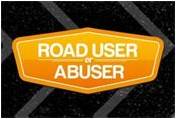Road user or abuser?
The Issue 
Victorian roads were fraught with hostility. Cyclists spoke of abuse from drivers who resented their presence, unaware of the challenges they faced. Drivers were angrier than ever, irritated by the ‘lycra-clad peddlers’ who were becoming increasingly common on the roads.
The media was making matters worse. News articles focused on the growing tension between cyclists and drivers and gave the perception that there was widespread bloodshed on our roads.
Public figures weren’t helping the situation, with celebrities such as Shane Warne turning a road interaction into a public slurring match, further polarising the two groups. The road toll was too high to ignore. Over the last five years, 43 cyclists were killed and 2,245 seriously injured. The research was clear – drivers and cyclists needed to show greater tolerance and respect towards each other. We were faced with a big challenge. To improve the relationship between cyclists and drivers and ultimately, change their behaviour. Something needed to be done to pacify the ‘us versus them’ aggression.
The Solution: Educate through discussion
We designed a six-week Facebook campaign called ‘Road User or Abuser,’ to change the road user landscape and create empathy through discussion. Attitude change is never easy, but is an even more difficult task when the audiences have firmly entrenched views. Our communications needed to open minds and create receptiveness to a new perspective. One of the most influential forces in society is peer opinion. In the social media landscape, this is even more persuasive. By creating Road User or Abuser, we were able to connect drivers and cyclists and create the perfect environment for absorbing the opinion of the other side.
The Results
Three evaluation tools were used to measure the success of the campaign.
1. Consumer research
Independent qualitative consumer research was conducted before and after the campaign.
The pre-campaign research was designed to set a benchmark in key areas, such as attitudes towards road users, knowledge of road rules and behaviour on the roads.
The post-campaign research measured participants’ responses against these key themes and also tested awareness of the campaign.
Research highlights:•90% of participants intended to improve their behaviour towards other road users after seeing the campaign. •37% of participants who had seen the campaign felt a strong emotional response towards the material. •91% of participants agreed with the key messages of the campaign. •The overall message of the communications was universally understood.
2. Web analytics
A total of 3,255 people liked the Facebook page and 728,114 of their friends were exposed to the page.
Using a formula developed by Australian based Ehrenberg-Bass Institute in November 2011, the campaign achieved an online engagement score of 82.2%. This significantly outperformed the 200 most recognisable brands in the world, such as Nike, Google and SONY, which average 1.3%.
The viral video received 9,942 views.
The quiz was completed by 4,128 users. Users posted a total of 4,503 comments.3. Media analysis The campaign generated much media interest with 74 television, print and web media items published over a six week period. The campaign received no negative coverage achieving 100% favourability. The most prominent media message highlighted the need for drivers and riders to show mutual respect on the road. The following YouTube video went viral to drive traffic to the campaign’s Facebook page.
Creative agency: JWT Melbourne

